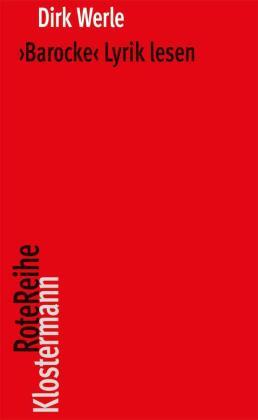| Verlag | Klostermann |
| Auflage | 2019 |
| Seiten | 160 |
| Format | 12,3 x 20,2 x 1,1 cm |
| Gewicht | 170 g |
| Reihe | Klostermann RoteReihe |
| ISBN-10 | 3465043413 |
| ISBN-13 | 9783465043416 |
| Bestell-Nr | 46504341A |
Wie sollte man deutschsprachige Lyrik des 17. Jahrhunderts lesen? Dirk Werle beantwortet diese Frage auf der Basis eines konsequent historischen Gattungs- und Epochenverständnisses: Unter 'Lyrik' hat man im 17. Jahrhundert etwas anderes verstanden als heute, und der Begriff des 'Barock' war unbekannt. Für die jedes Kapitel einleitenden Beispielanalysen, aus denen allgemeinere Überlegungen und Gesichtspunkte entwickelt werden, wurden Gedichte ausgewählt, die nicht in einschlägigen Anthologien auftauchen und die daher einen unbefangenen Zugang zu einem faszinierenden Feld der Literaturgeschichte ermöglichen. Werle zeigt, dass Lyrik des 17. Jahrhunderts durch eine Poetik der Wiederholung charakterisiert ist, die auf Affinität zur Musik und dem Prinzip geselligen Spiels beruht. Es handelt sich um eine Form von Popliteratur, die nicht direkt auf die Realität referiert, sondern eine poetische Eigenwelt erzeugt und für ihr Verständnis eine 'Hermeneutik des Einfachen' fordert, die in dies em Buch eingeführt und erläutert wird.How should one go about reading German 17th century poetry? Dirk Werle answers this question on the basis of a consistently historical understanding of both genre and epoch. In the seventeenth century, "poetry" had a decidedly different meaning from what we take it to be today, and there was no such thing as our term "Baroque". For each of the chapter's introductory analyses, from which more general considerations and points of view are developed, poems have been selected that do not appear in relevant anthologies and therefore allow unbiased access to a fascinating field of literary history. The Author shows that 17th century poetry is characterized by a poetics of repetition, based on affinity to music and the principle of convivial play. It is a form of pop literature that does not directly refer to reality, but creates a poetic world all its own. To grasp this phenomenon, a "hermeneutics of simplicity" is called for, which is introduced an d explained in this book.

